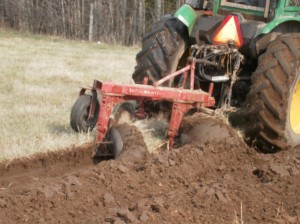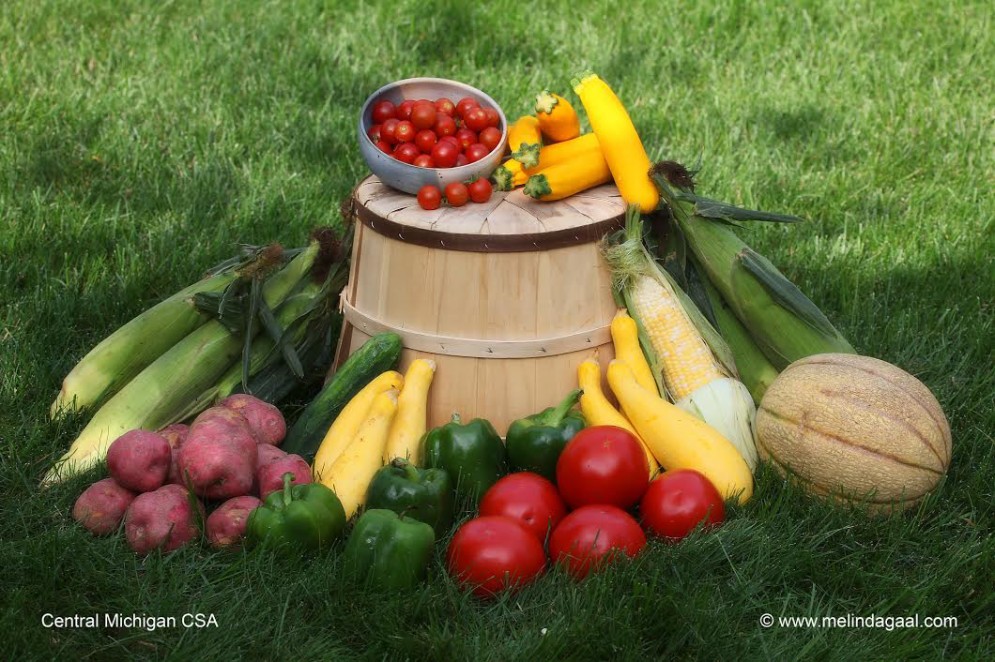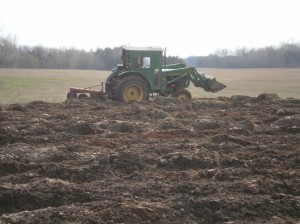The plants are started and the seeds are waiting for the 2012 growing season and thanks to the Caribbean like weather we’ve been having here in Central Michigan we’ve got the plowing done, and in March no less! We needed to work up more ground for the 2012 CSA program and I also worked up a good piece of ground in the Back Field for some winter squash, pumpkins, and watermelon. I decided to put them in their own area as the climb and crawl like crazy and are a later crop as well. This also allows me to use the front field to better stage the vegetable plantings so we have a longer harvest season on each variety. The early round will be transplanted into the field soon along with another planting that goes into high tunnels.
Why Do We Plow?
Plowing is a natural farming method that reduces weeds and improves soil for growing since we don’t spray weed killers, we need to plow instead. Sometimes we plant cover crops like rye or winter wheat and plow it down in the spring or fall then plant. The cover crop gives the new years plants organic matter that turns into nitrogen and helps the plants to grow and make good size. Cover crops can also be disc-ed rather than plowed and another benefit they provide is keeping weeds from growing. You don’t have to plow every year but we grow most of our produce in the front field that has been pasture for years, so when we expand the growing area we need to turn that pasture under and prep it for planting. Did you know that the plow is one of the hardest pieces of farm equipment to pull?
Prepping Ground to Grow Good Vegetables
Plowing is just the first step, once that is done we hook on to the disc is which is a simple machine with a bunch of saucer looking cutting discs. The disc cuts up the plowed ground and lays the field down in the process. Notice in the picture above how bumpy the ground is, that’s what it looks like when it’s plowed. We go over the field several times with the disc cutting the chunks of overturned sod into smaller pieces and cutting up root systems from the grass. Meanwhile the overturned earth will start decomposing creating vital nutrients for the plants that will soon be growing there.
The next step is dragging the field which further levels the area and removes clumps of sod and leaves the field somewhat ready to plant. In fact if you were going to plant a traditional agricultural crop it would be ready for the planter at this point. We plant a large variety of vegetables and because we us a raised bed system and raised bed machine we need to do one more thing and that is to rototill. Rototilling the ground before we run the raised bed machine just fluffs the ground and breaks up any remaining clumps. The clumps can cause the mulch to tear and interfere with our irrigating drip lines. The raised bed machine actually makes the raised beds, installs the mulch and installs the low pressure drip lines all at once. Once the beds are in and the drip lines hooked up we are ready to plant.



0 comments… add one